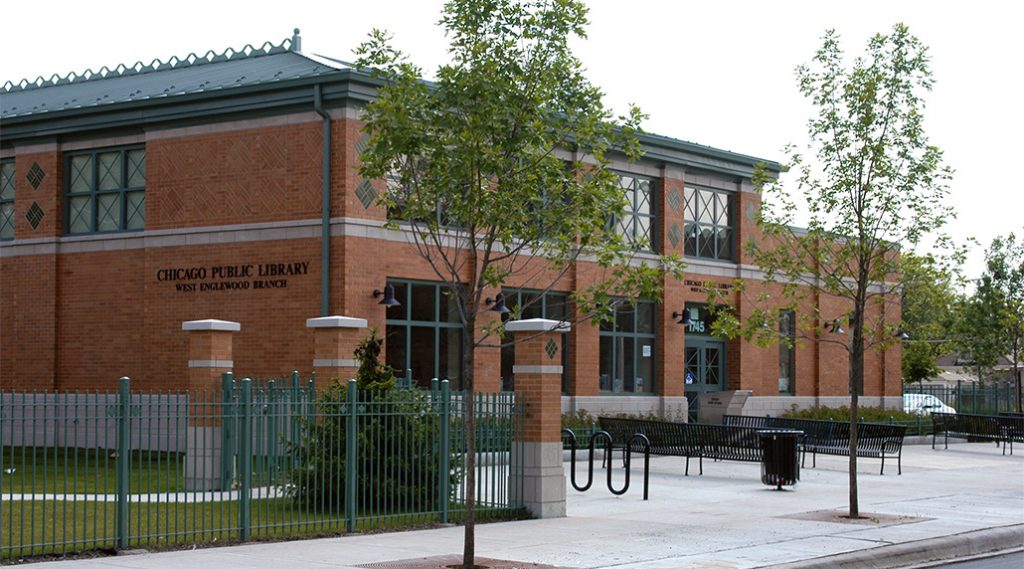Harper High School sophomore Kearre Grant was disappointed as he read the letter sent to hundreds of Englewood high school students recently, explaining that their schools would close to make way for a new $75 million facility.
Instead of spending $75 million on a new building, Grant wishes Chicago Public Schools would invest some of that money into improving Harper. “It’s a lot of space up in that school to do a lot more activities,” said Grant, 16, who has taken advantage of the few programs Harper still offers, like JROTC, After School Matters and athletics. He’d like to see the school bring back programs offered when his family attended Harper, like band, carpentry and the majorettes.
“They took away a whole lot of stuff for these kids,” said Clifford Fields, who sits on the Harper Local School Council and has two children who graduated from the school. “We had a lot going on in the school and when you lose that, you lose the students. How do you expect these kids to move forward?”
CPS officials promise that the new school will be a state-of-the-art facility in a community that desperately needs it, given its long history of disinvestment, gun violence and high unemployment. More Englewood students attend high school outside the neighborhood than in any other community in Chicago, according to the district, despite having one of the largest populations of high school students.
But the closure of Harper threatens to add to a problem that has already hit Englewood harder than most neighborhoods in the city, by adding to the inventory of vacant buildings left behind when schools close. The charter schools that share buildings with TEAM Englewood and Hope high schools will remain open, so those buildings won’t be vacant. And Robeson will be demolished after the new high school is built on its campus.
As of yet, the district has no plans for repurposing Harper. In a news release sent to reporters last week, officials said only that they would “work with the community on the best ways to repurpose the Harper site.” Meanwhile, all five Englewood elementary schools shuttered in the 2013 mass closures are still vacant, and three of them are within a mile and a half of Harper.
The Chicago Reporter is tracking the sale of schools that were shuttered in 2013. Two dozen schools, more than half the total, are still empty in black communities on the South and West sides of the city.
Parents and residents fear that Harper — a century-old building large enough to hold nearly four football fields — will become a giant vacant behemoth adding to the community’s blight.
Asiaha Butler, president of the Resident Association of Greater Englewood, has been active in school repurposing and planning for the new high school. Her group opposes Harper’s closure, and Butler points out that the city doesn’t have a good track record for school repurposing and has moved too slowly in the past, allowing vandals and weather to damage the buildings and making it harder to sell or renovate them.

“They really jacked up the repurposing process [after the 2013 closures],” Butler said. “For me, it’s always been a concern about these institutions becoming vacant spaces and becoming like the homes we have here with the Xs on the buildings.”
Officials hope the new high school will continue to spur development in Englewood, which has attracted some new retail lately, including a Whole Foods grocery store. But Butler is careful to point out that building a high school is “not investment in the whole area.”
Four neighborhood high schools in Englewood will be shuttered and their attendance boundaries combined in order to build a new $75 million high school slated to open in the fall of 2019, according to the district’s plan.
“We have to look at this like a campus and really be strategic about other investments that need to happen,” she said, such as improved parks, revitalized homes and more jobs for Englewood residents. Otherwise, she said, the school could end up “another shiny institution that no one is going to use.”
Both Ald. Raymond Lopez, whose ward includes Harper, and Ald. Roderick Sawyer, whose ward includes the new high school, have said they want Harper to stay open. They point out it’s the only neighborhood high school that serves the western edge of Englewood. Closing Harper would force students to travel two miles to the new school, crossing multiple gang lines. CPS says it’s working with police and community groups to develop a safety plan.
While Englewood residents have lobbied for a high-quality high school to stem the declining enrollment in the community, some critics say the timing is curious. The district’s moratorium on school closures isn’t up until next year. And the school is scheduled to open in 2019, a mayoral election year. Some fear Mayor Rahm Emanuel, who plans to run for a third term, will use the school to court black voters.

There’s also concern about the quality of education for students who are already enrolled in the four schools slated to close. Often, when CPS announces a school will close, enrollment dips even further. The four schools will accept freshmen this fall, and a final date for closure hasn’t been finalized yet. CPS says that will depend on the schools’ enrollment and input from parents and community members.
Another concern is the potential loss of more veteran black teachers. Their ranks have declined significantly in recent years in the wake of school closures and turnarounds that disproportionately hit schools in black communities, where many black teachers work. If these displaced teachers aren’t hired to work at the new school, it could have a destabilizing effect on the community.
“Many of the teachers and staff at these schools are African-American women who have already experienced consolidations and closures at schools such as South Shore and Calumet high schools,” the Chicago Teachers Union said in a statement. “Instead of closing schools, we should be fortifying them.”
Harper was one of the first two turnaround schools in Chicago, a reform strategy led by former CEO Arne Duncan, who went on to become President Obama’s education secretary. The turnaround pumped millions of dollars into the school, but the strategy requires the entire staff to reapply for their jobs, and many were not rehired. After the funds ran out, the school lost resources it desperately needed. Counselors, social workers, a full-time school psychologist and mentoring programs vanished.
“Without the extra money, everything just fell apart,” said one former Harper teacher who worked through the turnaround. “It’s not like the Englewood neighborhood has changed and has all these services. A broken social safety network doesn’t help support a school.”
But Fields, the Harper LSC member, thinks there is still hope for Harper, pointing to the 2015 hunger strike that led to the re-opening of Dyett as a neighborhood high school in Washington Park.
“I think we can have a big voice in it,” he said. “I’ve seen… the parents come together to save a school.”

